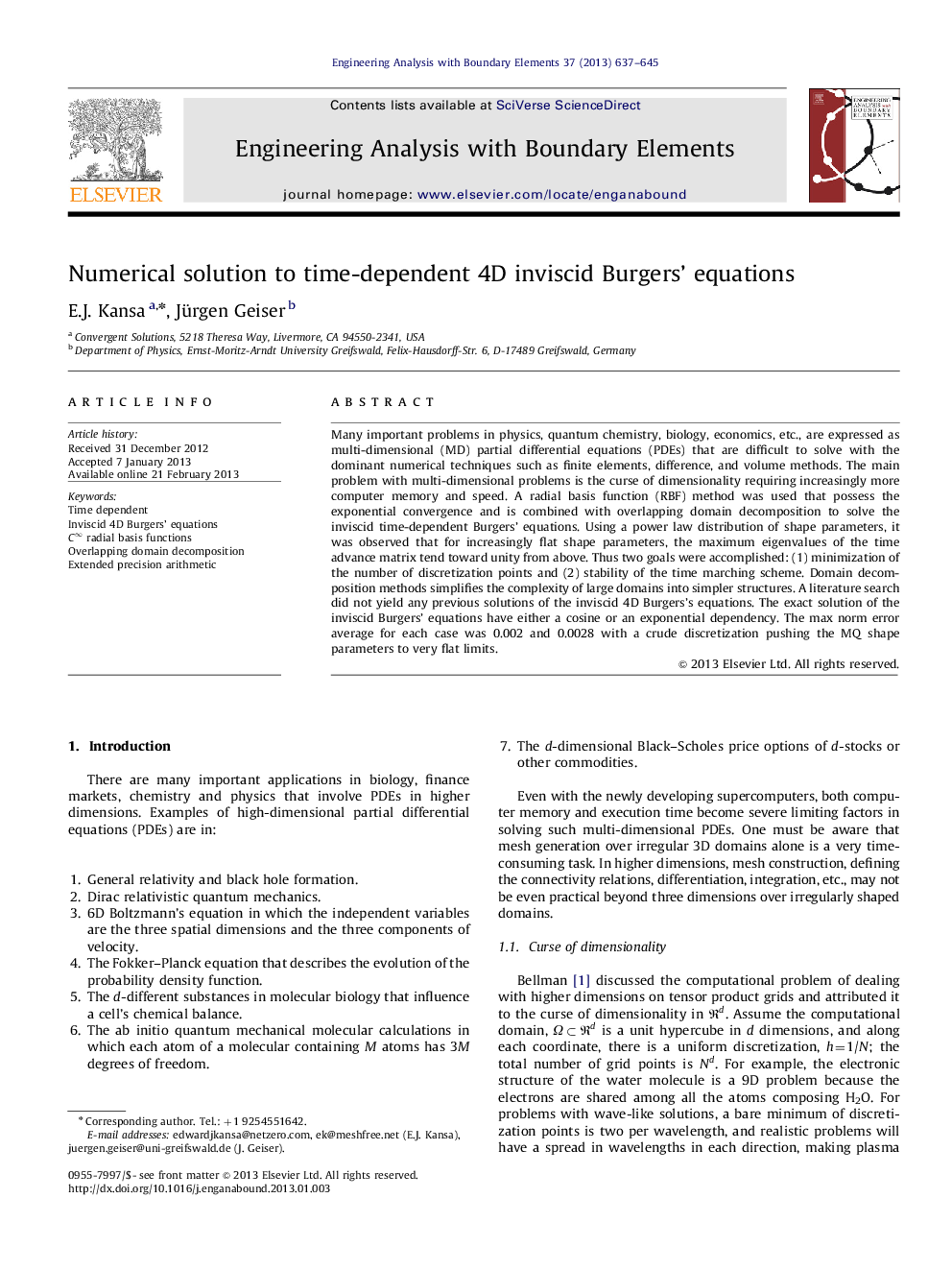| Article ID | Journal | Published Year | Pages | File Type |
|---|---|---|---|---|
| 512901 | Engineering Analysis with Boundary Elements | 2013 | 9 Pages |
Many important problems in physics, quantum chemistry, biology, economics, etc., are expressed as multi-dimensional (MD) partial differential equations (PDEs) that are difficult to solve with the dominant numerical techniques such as finite elements, difference, and volume methods. The main problem with multi-dimensional problems is the curse of dimensionality requiring increasingly more computer memory and speed. A radial basis function (RBF) method was used that possess the exponential convergence and is combined with overlapping domain decomposition to solve the inviscid time-dependent Burgers' equations. Using a power law distribution of shape parameters, it was observed that for increasingly flat shape parameters, the maximum eigenvalues of the time advance matrix tend toward unity from above. Thus two goals were accomplished: (1) minimization of the number of discretization points and (2) stability of the time marching scheme. Domain decomposition methods simplifies the complexity of large domains into simpler structures. A literature search did not yield any previous solutions of the inviscid 4D Burgers's equations. The exact solution of the inviscid Burgers' equations have either a cosine or an exponential dependency. The max norm error average for each case was 0.002 and 0.0028 with a crude discretization pushing the MQ shape parameters to very flat limits.
